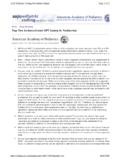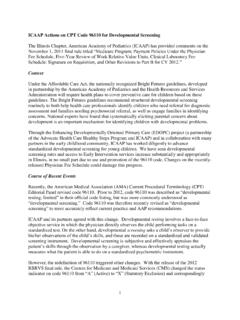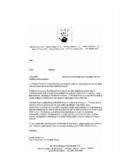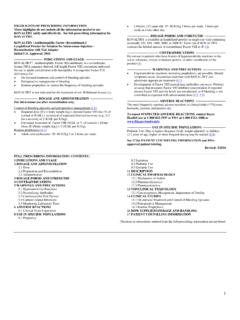Transcription of GUIDELINES FOR THE MANAGEMENT OF …
1 GUIDELINES FOR THEMANAGEMENT OFHEMOPHILIAWORLD FEDERATION OF HEMOPHILIAP ublished by the World Federation of hemophilia World Federation of hemophilia , 2005 The WFH encourages redistribution of its publications for educational purposes by not-for-profit hemophiliaorganizations. For permission to reproduce or translate this document, please contact the CommunicationsDepartment at the address publication is accessible from the World Federation of hemophilia s Web site at Additionalcopies are also available from the WFH at:World Federation of Hemophilia1425 Ren L vesque Boulevard West, Suite 1010 Montr al, Qu bec H3G 1T7 CANADATel.: (514) 875-7944 Fax: (514) 875-8916E-mail: World Federation of hemophilia does not endorse particular treatment products or manufacturers; anyreference to a product name is not an endorsement by the WFH.
2 The World Federation of hemophilia does notengage in the practice of medicine and under no circumstances recommends particular treatment for specificindividuals. Dose schedules and other treatment regimes are continually revised and new side-effects GUIDELINES are intended to help develop basic standards of care for the MANAGEMENT of hemophilia and donot replace the advice of a medical advisor and/or product insert information. Any treatment must be designedaccording to the needs of the individual and the resources available. TABLE OF CONTENTSI ntroduction 1 General MANAGEMENT of Hemophilia3 What is hemophilia ?3 Diagnosis of Hemophilia3 Bleeding Manifestations in Hemophilia4 Sites of Bleeding4 Incidence of Different Sites of Bleeding4 Incidence of Bleeding into Different Joints4 Chronic Complications of Hemophilia5 Carriers5 Comprehensive Care5 Comprehensive Care Team6 Functions of Comprehensive Care Program7 The Family7 MANAGEMENT of Hemophilia7 Principles of Care7 MANAGEMENT of Bleeding8 Adjunctive Management8 Home Therapy9 Prophylaxis9 Surgery10 Inhibitors10 MANAGEMENT of Bleeding11 Allergic Reactions in hemophilia B Patients with Inhibitors11 Immune Tolerance Induction11 Patients Switching to New Concentrates12 Genetic Counselling/Prenatal Diagnosis12 Delivery of Infants with Known or Suspected Hemophilia12 Vaccination13 Psychosocial Issues13 Daily Living13 For the Person with Hemophilia14 For the Family14 For the
3 Community14 Dental Care15 Monitoring Outcome of Treatment16 Sports and Hemophilia16 GUIDELINES for the MANAGEMENT of HemophiliaLaboratory Diagnosis17 Introduction17 Knowledge and Expertise in Coagulation Laboratory Testing17 Principles of Diagnosis17 Technical Aspects17 Preparation of the Patient Prior to Taking a Blood Sample17 Collecting the Sample17 End-Point Detection18 Screening Tests19 Correction (Mixing) Studies19 Factor Assay19 Trained Personnel20 Use of the Correct Equipment and Reagents20 Equipment20 Reagents21 Quality Assurance21 External Quality Assessment Scheme (EQAS)22 Reference Materials and Standards22 Musculoskeletal Complications of hemophilia 23 Introduction23 Acute Hemarthrosis23 Aspiration24 Muscle Hematomas25 Chronic Hemarthrosis25 Chronic Synovitis25 Synovectomy26 Chronic Hemophilic Arthropathy26 Pseudotumours27 Fractures28 Selection of Clotting Factor Concentrates and Other Drugs29 Clotting Factor Concentrates29 Choice of Products for Replacement Therapy30 Purity30 Viral Inactivation/Elimination31 Plasma-Derived/Recombinant Products31 GUIDELINES for the MANAGEMENT of HemophiliaGuidelines for the MANAGEMENT of HemophiliaCryoprecipitate31 Fresh Frozen Plasma and Cryo-Poor Plasma32 Other Pharmacological Options32 Desmopressin (DDAVP)
4 32 Tranexamic Acid34 Aminocaproic Acid35 Treatment of Bleeding in Hemophilia37 Basic Principles of Treatment37 Treatment of hemophilia A (FVIII Deficiency)37 FVIII Concentrates37 Cryoprecipitate/Fresh Frozen Plasma38 Desmopressin (DDAVP)38 Treatment of hemophilia B (FIX Deficiency)38 FIX Concentrates38 Fresh Frozen Plasma39 Antifibrinolytic Agents40 Treatment of Specific Hemorrhages40 Joint Hemorrhage40 Muscle Hemorrhage40 Iliopsoas Hemorrhage40 Central Nervous System Hemorrhage/Head Trauma41 Throat and Neck Hemorrhage41 Acute Gastrointestinal Hemorrhage41 Acute Hemorrhage in the Abdomen41 Ophthalmic Trauma or Hemorrhage42 Renal Hemorrhage42 Oral Hemorrhage42 Epistaxis42 Soft Tissue Hemorrhage43 Lacerations and Abrasions43 Other MANAGEMENT Issues43 Dental Care43 Surgery44 Minor Invasive Procedures44 Allergic Reactions to Factor Replacement Products44 Tables.
5 Plasma Factor Level and Duration of Administration45 Bibliography47 INTRODUCTIONA lthough effective therapy has been available for hemophilia for at least 30 years, many issuesremain unresolved regarding the MANAGEMENT of this condition, particularly with reference todoses and duration of factor replacement therapy for different types of bleeding, immunetolerance induction, and surgical prophylaxis. Many countries that are starting to establish care for hemophilia do not have standard protocolsto ensure the proper MANAGEMENT of hemophilia . As the World Federation of hemophilia (WFH)has expanded its various programs to improve care for people with hemophilia worldwide, moreand more requests have been made for standard GUIDELINES that are appropriate for countrieswhere economic resources are limited, to ensure a basic level of care.
6 As there were no GUIDELINES for the MANAGEMENT of hemophilia with a universal outlook, theWFH established a working group in 2003 to develop such GUIDELINES . This group, consisting ofPaul Giangrande, Man Chiu Poon, Mary Chua, Angus McCraw, Jerome Wiedel, and AlokSrivastava (Chair), has worked to put together this document with the exemplary editorial helpof Elizabeth Myles at WFH headquarters. In the absence of good evidence for current protocols in practice in the MANAGEMENT of hemophilia ,the information included here is mainly adapted from published consensus GUIDELINES fromdifferent centres or countries, including hemophilia of Georgia (USA), the Association ofHemophilia Clinic Directors of Canada, the National hemophilia Foundation (USA), ItalianAssociation of hemophilia Centres, hemophilia Federation, India, and the South AfricanHemophilia Foundation.
7 Directors of the International hemophilia Training Centres of the WFHas well as all the centres involved in the WFH Twinning Program were consulted. The currentversion of these GUIDELINES incorporates the suggestions from many of these physicians, forwhich we are extremely grateful and welcome further comments. As and if new evidence isgenerated on different aspects of the MANAGEMENT of hemophilia , these GUIDELINES will beupdated and revised as purpose of these GUIDELINES is to provide protocols for treatment to centres that arebeginning to establish care for people with hemophilia . They may also help standardize care atthe more established ones. The WFH hopes that as well as helping those less familiar with themanagement of this condition, this publication will be a small step towards harmonizing care ofpeople with hemophilia in the world until evidence-based practice is Srivastava, MDWFH Treatment GUIDELINES Working GroupGuidelines for the MANAGEMENT of Hemophilia1 GUIDELINES for the MANAGEMENT of Hemophilia3 SECTION 1 GENERAL MANAGEMENT OF HEMOPHILIAWhat is hemophilia ?
8 hemophilia is an X-linked congenital bleeding disorder with a frequency of aboutone in 10,000 births. hemophilia is caused by a deficiency of coagulation factor VIII (FVIII) ( hemophilia A)or factor IX (FIX) ( hemophilia B) related to mutations of the clotting factor gene. The number of affected persons worldwide is estimated to be about 400,000. hemophilia A is more common than hemophilia B, representing 80-85% of the total. The life expectancy of persons born with hemophilia , who have access to adequatetreatment, should approach normal with currently available of hemophilia Accurate diagnosis is important and essential for effective MANAGEMENT . hemophilia should besuspected in patients presenting with a history of: Easy bruising in early childhood; Spontaneous bleeding (particularly into the joints and soft tissue); and Excessive bleeding following trauma or surgery.
9 While the history of bleeding is usually lifelong, some severe hemophilic children may not havebleeding symptoms until after the age of one or later when they begin walking and exploringtheir world. Patients with mild hemophilia may not have excessive bleeding unless theyexperience trauma or surgery. A family history of bleeding is commonly obtained. hemophilia generally affectsmales on the maternal side. However, both FVIII and FIX genes are prone to newmutations, and as many as 1/3 of all patients may not have a family history of thesedisorders. Screening tests will show a prolonged activated partial thromboplastin time (aPTT) insevere and moderate cases but may not show prolongation in mild hemophilia . Adefinitive diagnosis depends on factor assay to demonstrate deficiency of FVIII orFIX. The severity of bleeding manifestations in hemophilia is generally correlated with the clotting factor level as shown in the following for the MANAGEMENT of HemophiliaBleeding Manifestations in HemophiliaSites of bleedingIncidence of different sites of bleedingIncidence of bleeding into different jointsSeverityClotting factor level% activity (IU/ml)Bleeding episodesSevere1% (< )Spontaneous bleeding, predominantly in joints and musclesModerate1%-5% ( )Occasional spontaneous bleeding.
10 Severe bleed-ing with trauma, surgeryMild5%-40% ( )Severe bleeding with major trauma or surgery Knee: 45% Elbow: 30% Ankle: 15% Shoulder: 3% Wrist: 3% Hip: 2% Other: 2% Hemarthrosis: 70%-80% Muscle/soft tissue: 10%-20% Other major bleeds: 5%-10% Central nervous system (CNS) bleeds: < 5%Serious Joints (hemarthrosis) Muscle/soft tissue Mouth/gums/nose HematuriaLife-threatening Central nervous system (CNS) Gastrointestinal (GI) Neck/throat Severe traumaChronic Complications of hemophilia Musculoskeletal complications: -Chronic hemophilic arthropathy; mChronic synovitis;mDeforming arthropathy;-Contractures;-Pseudotumour formation (soft tissue and bone);-Fracture; Inhibitors against FVIII/FIX; Transfusion-related infections of concern in people with hemophilia :-Human immunodeficiency virus (HIV);-Hepatitis B virus (HBV);-Hepatitis C virus (HCV);-Hepatitis A virus (HAV);-Parvovirus B19; an X-linked disorder, the disease typically affects males, while females are carriers.











